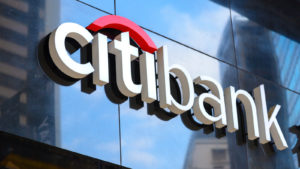The state of the recent crash on Wall Street saw bank stocks dip lower than benchmarks, due to fears over a recession shaking up the US economy. This saw many leading banks drop by multiple percentage points.
These downturns weren’t limited to the United States. Banks in Japan saw their biggest market drop since 2008, following a more hawkish rate hike from the Bank of Japan.
These struggles for global banking stocks could compound problems throughout markets, due to the lower levels of liquidity and greater volatility that institutional movements will cause as more fear returns in Q3 2024. However, we can see plenty of discounted opportunities emerge among bank stocks.
The banking sector is still one of the world’s most resilient and reliable. The net interest income in the banking market is expected to continue growing at a compound annual growth rate of 4.92%, leading to a market volume of $10.83 trillion by 2029.
This suggests that leading U.S. banks will still have plenty of room for growth, and their recent struggles form an attractive buy-in price for investors. Three key prospects for a recovery in August and beyond include the following options.
JPMorgan Chase & Co. (JPM)

One of the world’s biggest names in banking, JPMorgan Chase & Co (NYSE:JPM) rallied more than 18.64% over the past six months and has shown some resilience in rebounding from the recent Wall Street downturn at the beginning of August.
Crucially, JPMorgan Chase posted Q2 2024 results that comfortably surpassed analyst estimates and the banking giant received a boost based on its ability to command higher fees for services.
Revenue on a managed basis grew to $50.99 billion, while the bank’s profit climbed 25% over the same period last year to $18.15 billion, in a rise that also surpassed projections, due to a $7.9 billion boost from an exchange of JPMorgan’s Visa shares.
We’re also seeing plenty of evidence that JPMorgan Chase is keen to secure future growth through innovation.
According to a recent internal memo, the firm is launching a large-language model to ramp up its accommodation of generative AI services.
Dubbed LLM Suite, the service will provide generative AI technology for employees and will act as a digital research analyst for JPMorgan’s 50,000-strong workforce in offering productivity assistance within the firm.
Citigroup Inc (C)

Another stock that’s set to show long-term resilience in the face of recent Wall Street downturns is Citigroup (NYSE:C).
Despite posting growth of 7.94% in the past six months, the stock tumbled almost 15% between July 30 and Aug. 7, illustrating the level of fear that surrounded the stock as markets began to struggle.
However, there are plenty of reasons why this dip will be short-lived for Citigroup. Notably, the bank enjoyed a strong Q2 2024 earnings report in which earnings per share climbed to $1.52, comfortably exceeding expectations of $1.39.
Likewise, the firm’s revenue for the period rallied to $20.14 billion, beating the $20.07 billion expected.
We’re also seeing Citigroup maintain a focus on innovation despite market contractions. Recently, the bank was among six firms buying a stake in Indian tech company Netweb Technologies.
Citigroup is also a key dividend stock, which can be suitable for earning passive income in challenging market conditions. This may provide food for thought among investors, should recent Wall Street downturns intensify.
In addition, Citigroup’s periodic dividend will increase on August 23rd to $0.56, making it an attractive prospect for investors seeking to adopt a more cautious approach throughout the month and beyond.
PNC Financial Services Group (PNC)

One example of a bank stock that appears to have been largely unmoved by recent market volatility is PNC Financial Services Group (NYSE:PNC).
While many banks have been coming to terms with market downturns, PNC grew 16% in July 2024 alone, experiencing a lower downturn in early August in the process.
Much of the stock’s good fortune of late stems from strong Q2 revenue, which saw a 2.2% increase in revenue year-over-year to $5.41 billion, falling above expectations. Meanwhile, EPS for PNC also beat forecasts while climbing to $3.39.
Similarly to Citibank, PNC Financial Services was also able to increase its common stock dividend to $1.60 per share in a 3% increase on its second-quarter dividend.
Given the prospect of a recession in the U.S. has grown and expectations of more Federal Reserve rate cuts bringing lower appetite for high-interest financial services, dividend-paying bank stocks could offer great value to investors moving into August 2024.
Backed by strong fundamentals, this could make PNC an attractive prospect to pick up long-term.
On the date of publication, Dmytro Spilka did not hold (either directly or indirectly) any positions in the securities mentioned in this article. The opinions expressed in this article are those of the writer, subject to the InvestorPlace.com Publishing Guidelines.
On the date of publication, the responsible editor did not have (either directly or
indirectly) any positions in the securities mentioned in this article.
Dmytro is a finance and investing writer based in London. He is also the founder of Solvid, Pridicto and Coinprompter. His work has been published in Nasdaq, Kiplinger, FXStreet, Entrepreneur, VentureBeat and InvestmentWeek.
